Making sense of our connected world

Mobility transition in the neighbourhood: Simulating citizen participation in Berlin’s digital administration
How can city administrations tackle complex challenges like achieving climate neutrality, bringing about an ecological traffic turn, and modernising governance? The “Data & Smart City Governance using the example of air quality management” project explores how data and digital solutions can address these issues. It focuses on collaboration between administrations, businesses, and civil society in data collection and processing to achieve outcomes that serve the common good. The goal is to develop a data governance concept for smart cities. It should define various roles, responsibilities, processes, and policies to meet the normative, organisational, and technical requirements of data-driven urban development. The living lab tested whether the developed approaches genuinely address the needs of all stakeholders and offer sustainable solutions..
Conflicts of interest in data collection and processing
Administrations face significant challenges in implementing data-driven initiatives. Interests in data collection and processing can vary greatly among different city stakeholders — administration, citizens, businesses, and politics. These differing interests can lead to significant conflicts, which may even result in the failure of entire projects. Additionally, increasingly complex data-based decisions by administrations can be difficult for citizens to understand. A lack of explanation and transparency in such decisions further hinders citizens from exercising their influence. Active participation by all stakeholders affected by data collection and/or processing is therefore a fundamental principle of our understanding of successful data governance.
Resolving conflicts of interest through participation?
Local governments must meet high standards when making data-based decisions. The transparency requirement, derived from the principle of the German rule of law (Article 20, paragraph 3 of the Basic Law), obliges administrations to disclose the basis of their decisions. Given the growing complexity of data processing, this is no easy task. Various forms of participation can help identify and balance conflicts of interest early on, promote transparency, and increase overall acceptance of data-driven actions. The central question therefore is how citizen participation can be optimally designed to successfully implement data-driven initiatives.
Tested in the living lab: Better air through mobility transformation?
To address this question, the research team of Data & Smart City Governance conducted a living lab on air quality management, where possible scenarios of various traffic measures were simulated and discussed. A living lab is an experimental space where new approaches to political decision-making processes or societal changes are tested and further developed. The focus is on the active participation of citizens, who can directly contribute their needs, opinions, and ideas. The event took place on 23 November 2023 at CityLAB Berlin. The multimedia exhibition exemplified the process of traffic planning measures in Berlin. Within this setting, it was explored to what extent conflicts of interest could be resolved or meaningfully supplemented by the forms of participation already provided for in administrative processes (so-called formal participation). Formal participation forms include, for example, oral questions in the District Assembly, elections, or citizens’ initiatives. For scientific evaluation, an open discussion with the researchers followed the tour. Additionally, visitors filled out a questionnaire during their tour.
Structure of the interactive exhibition
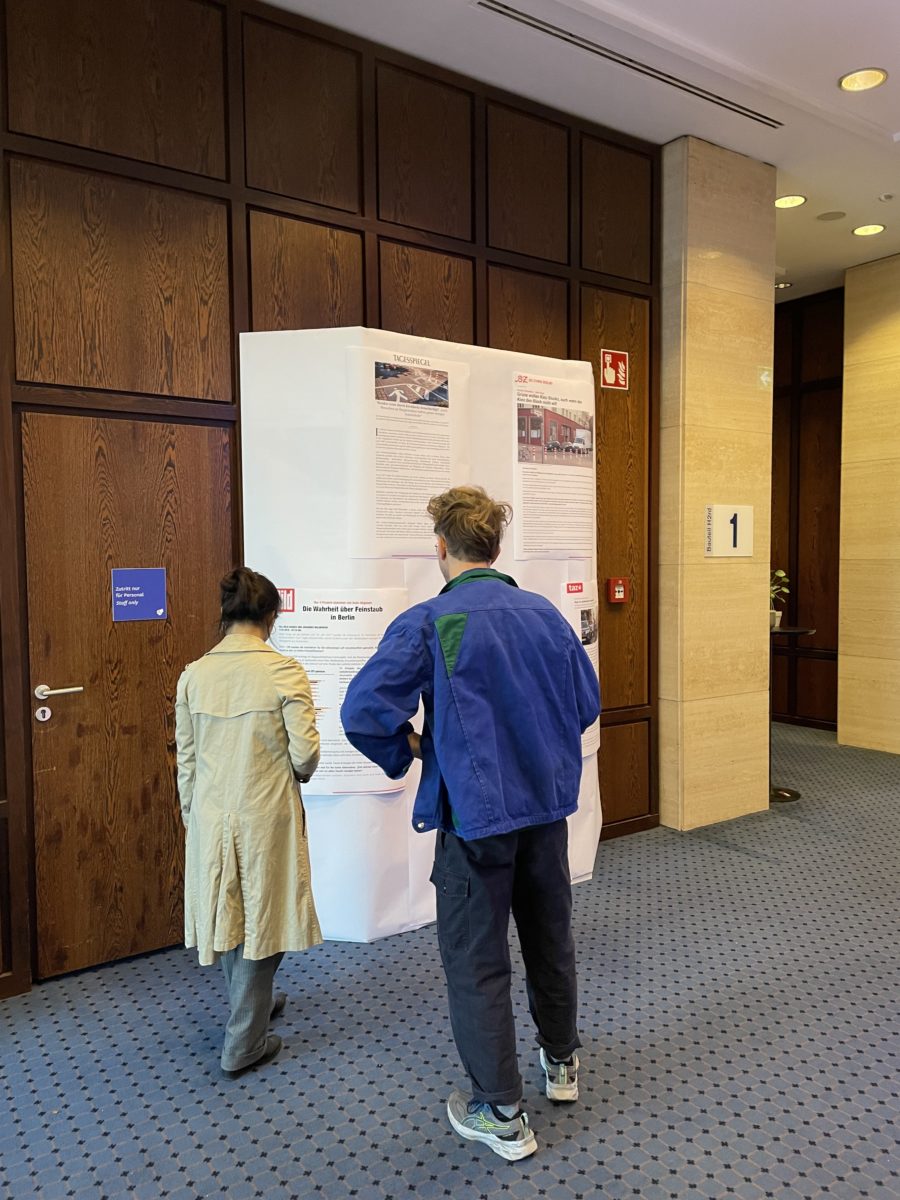
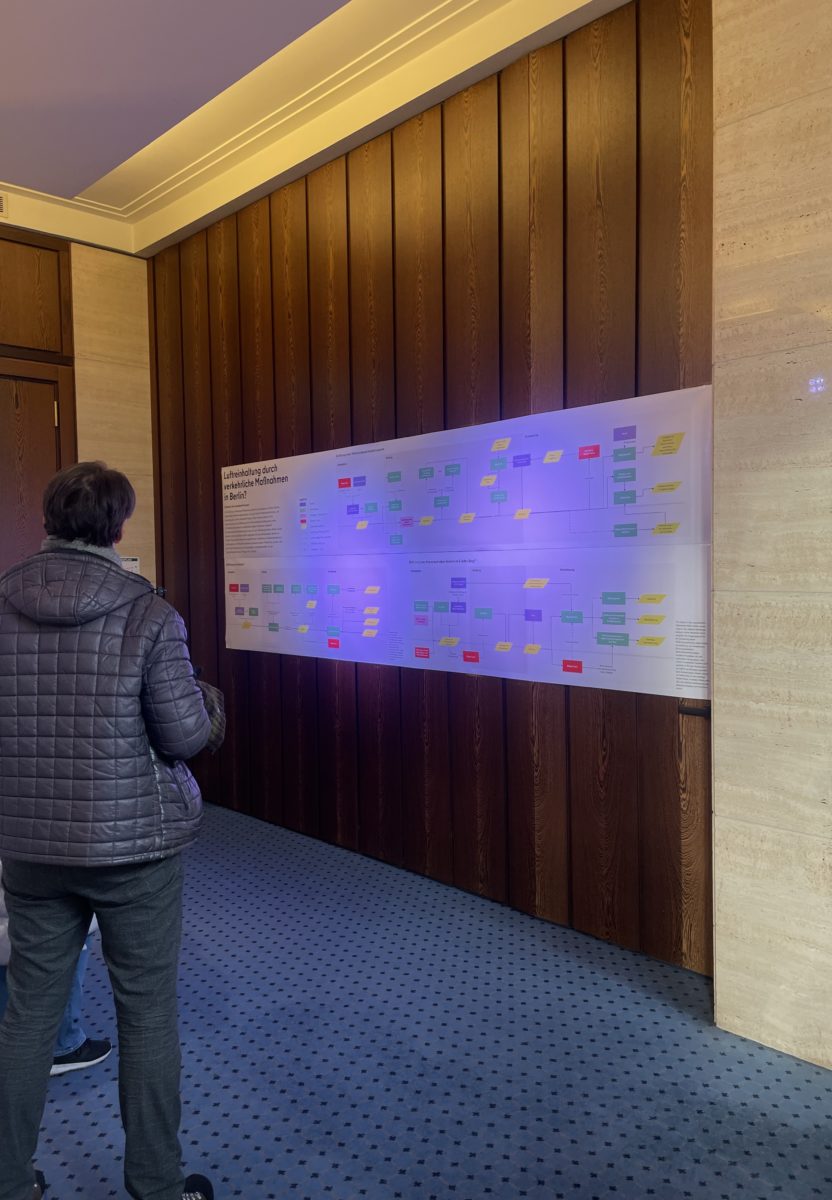
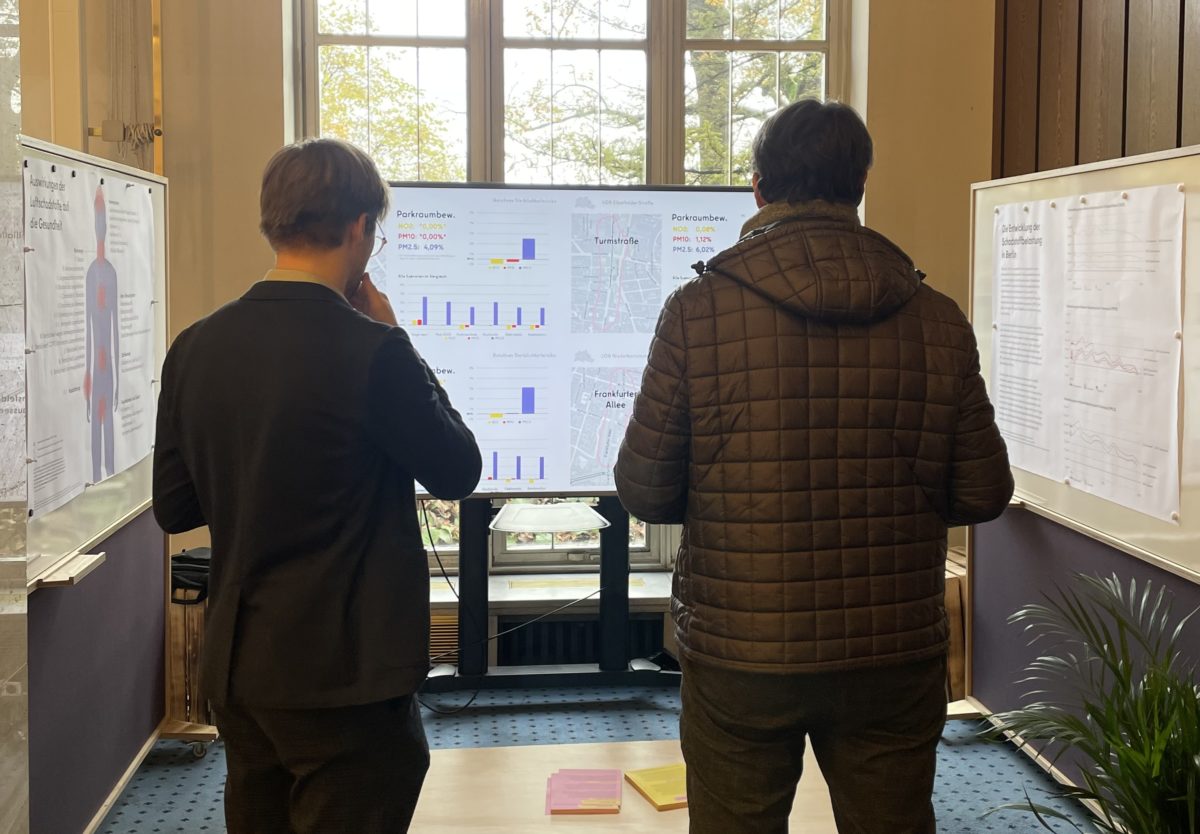
Participants went through the following stations:
Station 1: Opinion Formation
The aim of this station was to stimulate citizens’ opinion formation by confronting them with the comprehensive and often highly politicised discourse on traffic measures in Berlin. Actors portraying activists from both sides led the attendees in lively discussions about the pros and cons of various measures. A thorough engagement with the topic and the different positions by all involved is necessary for a successful participation process.
Station 2: Administrative Processes
At the second station, the administrative process of the three discussed measures from planning to implementation was depicted. Flowcharts illustrated, using the Berlin administration as an example, which actors work on the conception, review, and implementation of the respective measure at what time. In this way, citizens can understand: Who makes decisions at which point? This knowledge about these complex processes is largely confined within the administration. However, the living lab clearly demonstrated that this knowledge, along with the complexity of the procedures and the stakeholders involved, significantly influences citizens’ evaluations.
Station 3: The Impact of Traffic Measures on Air Quality
The next station communicated the impact of various traffic measures on air quality. These included, for example, an increase in the cost of resident parking permits (to €50 per month) within the entire S-Bahn ring, surpassing the cost of public transport (€49 per month), or a climate-neutral traffic zone (electromobility) within the S-Bahn ring. An interactive online dashboard simulated changes in air pollutant levels for each of the six simulated measure scenarios in the so-called life-world oriented spaces (LOR) in Berlin. In this way, the impact of individual measures can be read street by street, and their value weighed against possible local sacrifices. Moreover, the dashboard distinguishes the impact of various measures by example focus groups to highlight the varying degrees of impact on different interest groups within the city’s society. A large poster explained the data and models used to calculate the simulation displayed on the dashboard.
How could such measures to improve air quality concretely affect the cityscape? This was vividly illustrated using before-and-after representations of two selected locations in Berlin. These visualisations showed not only the changes in selected streets but also highlighted how such measures could have additional effects on other areas that should be considered in decision-making. For instance, parking spaces freed up by shifting car traffic to alternative modes of transport could be repurposed. The potential impact on the streetscape was forecasted by an urban planner based on simulation results and visualised using AI tools.
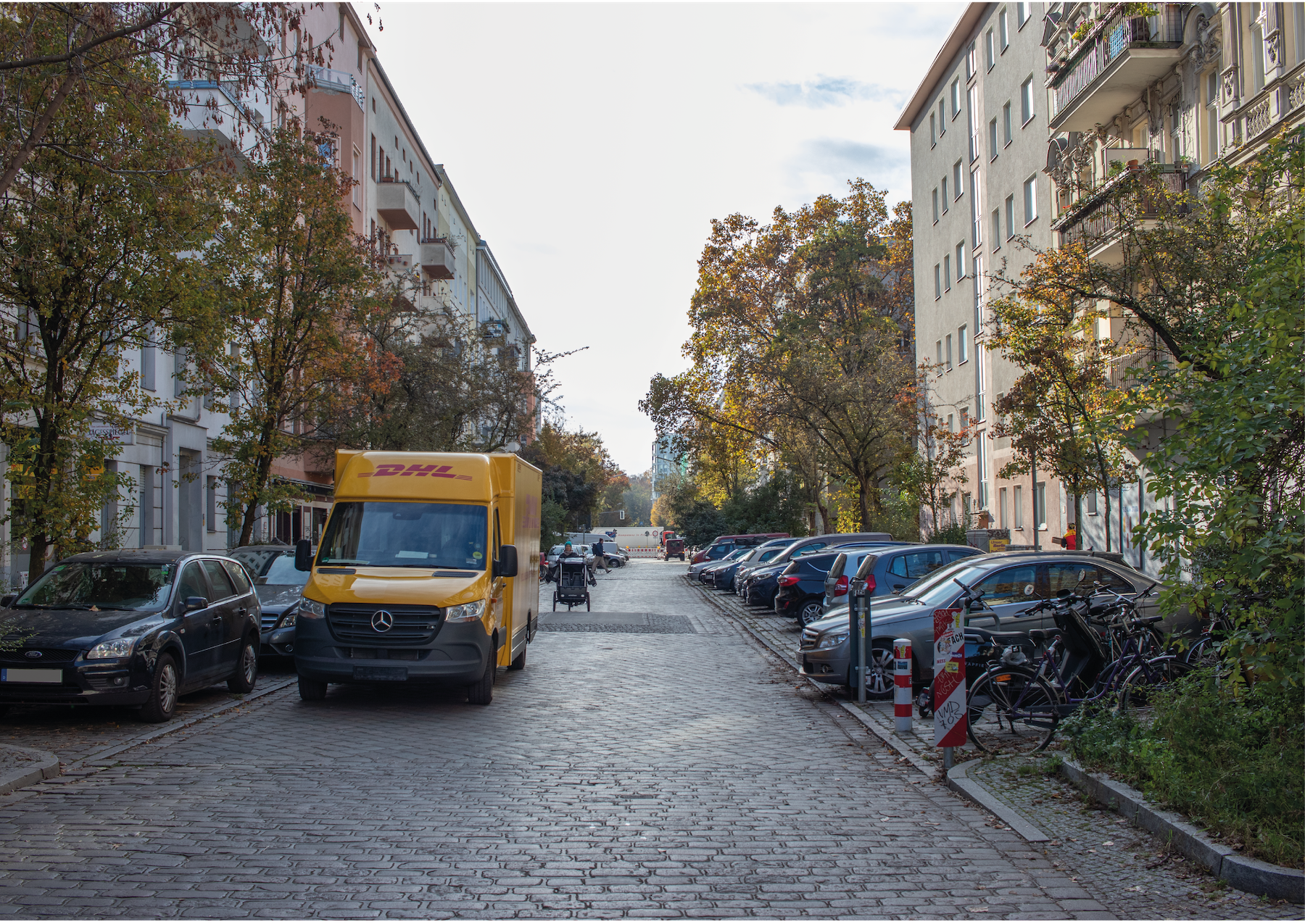
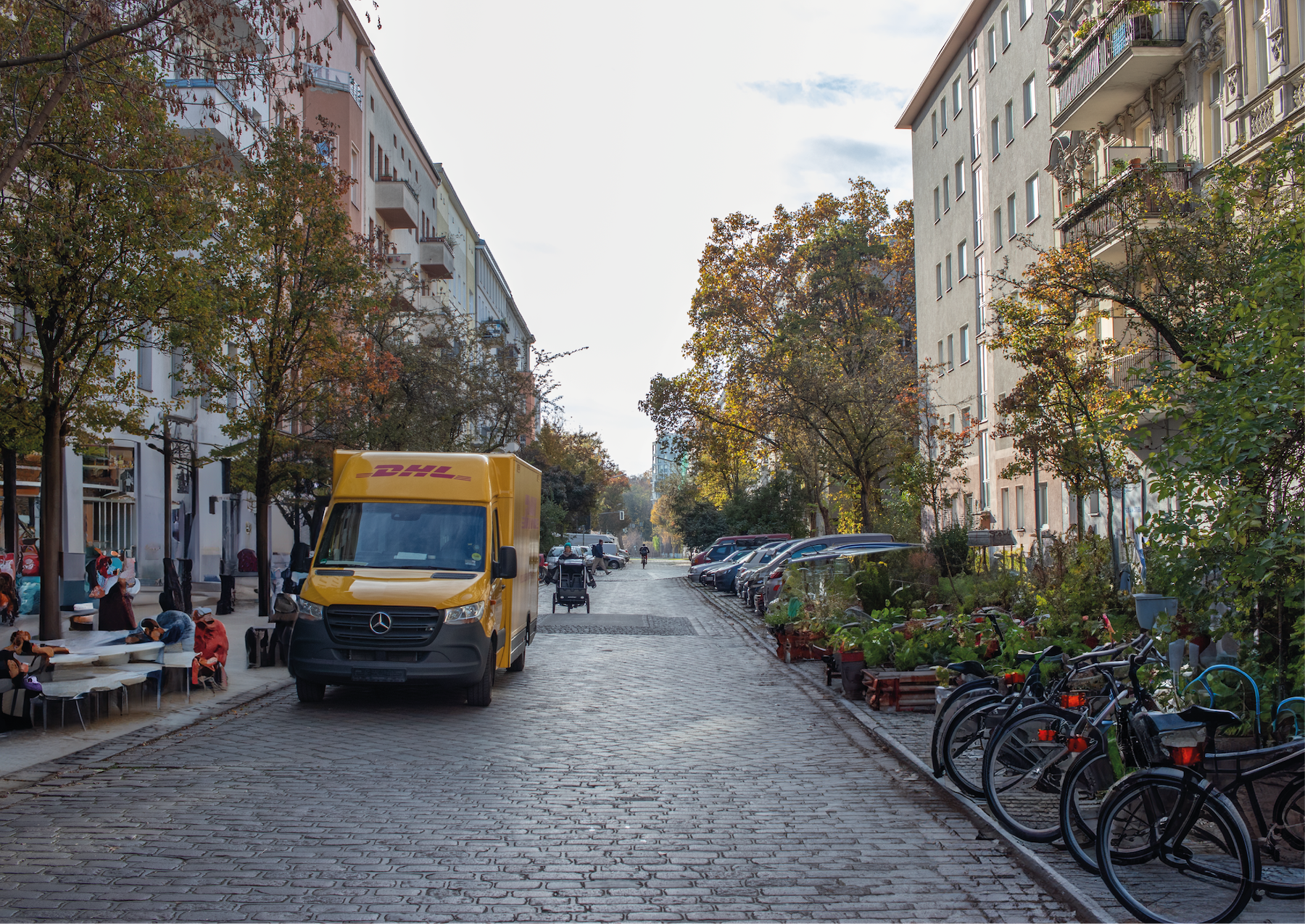
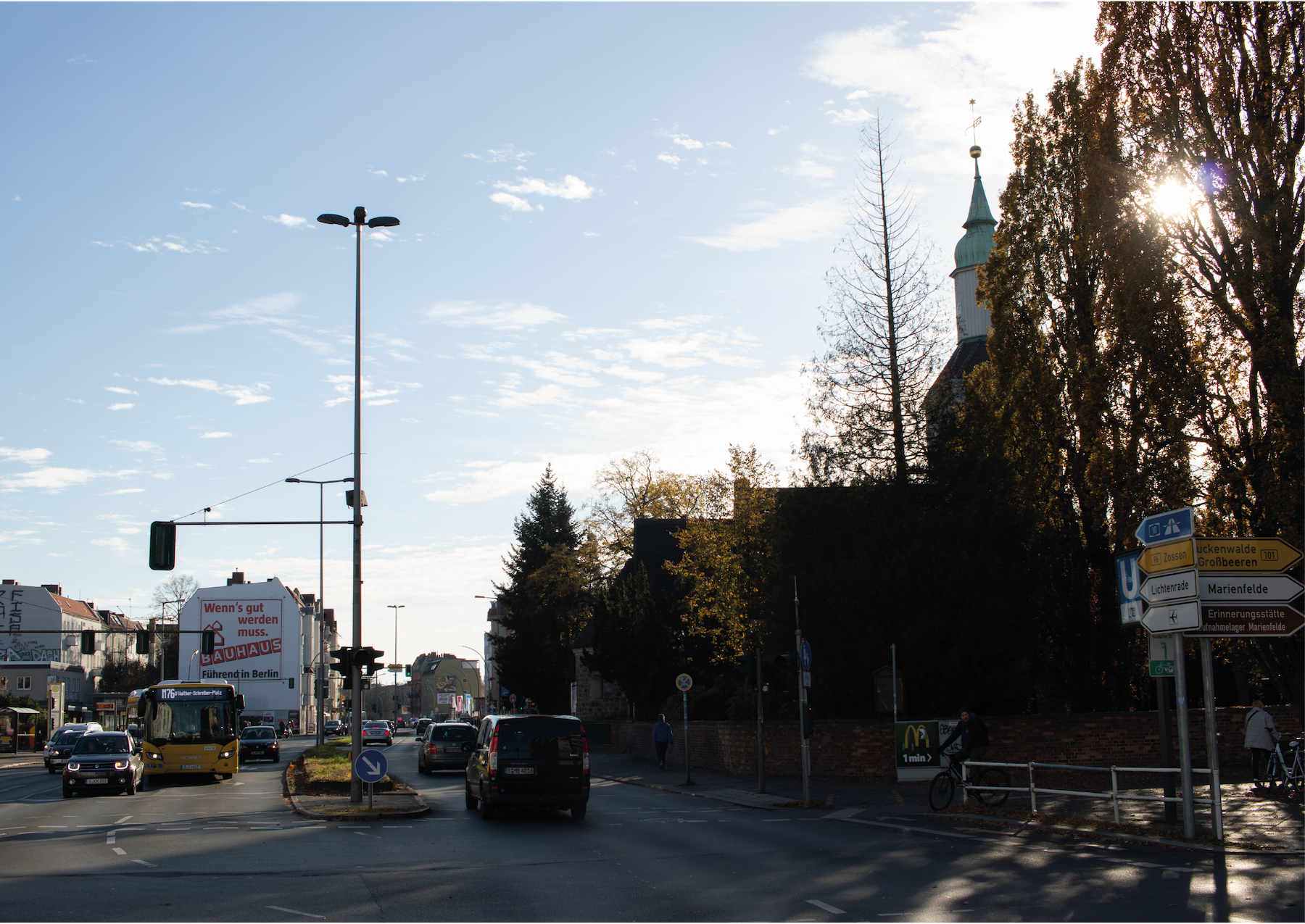
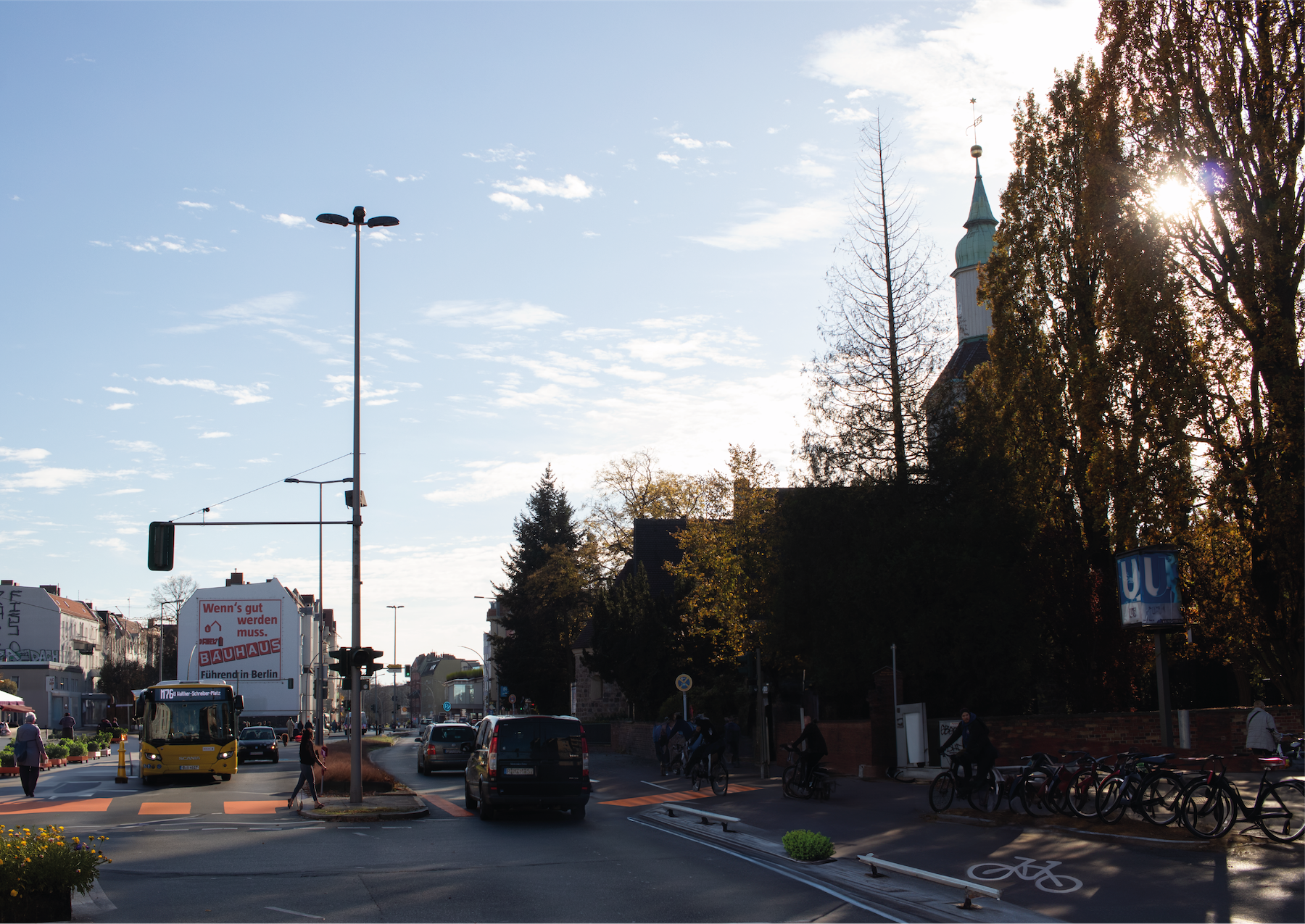
Additionally, the impact of air pollutants on the health of residents at selected locations in Berlin, including Pacelliallee (Dahlem), Bismarckstraße (Charlottenburg), and Niederbarnimstraße (Friedrichshain), was presented. How could a reduction in air pollution through the proposed measures affect relative mortality?
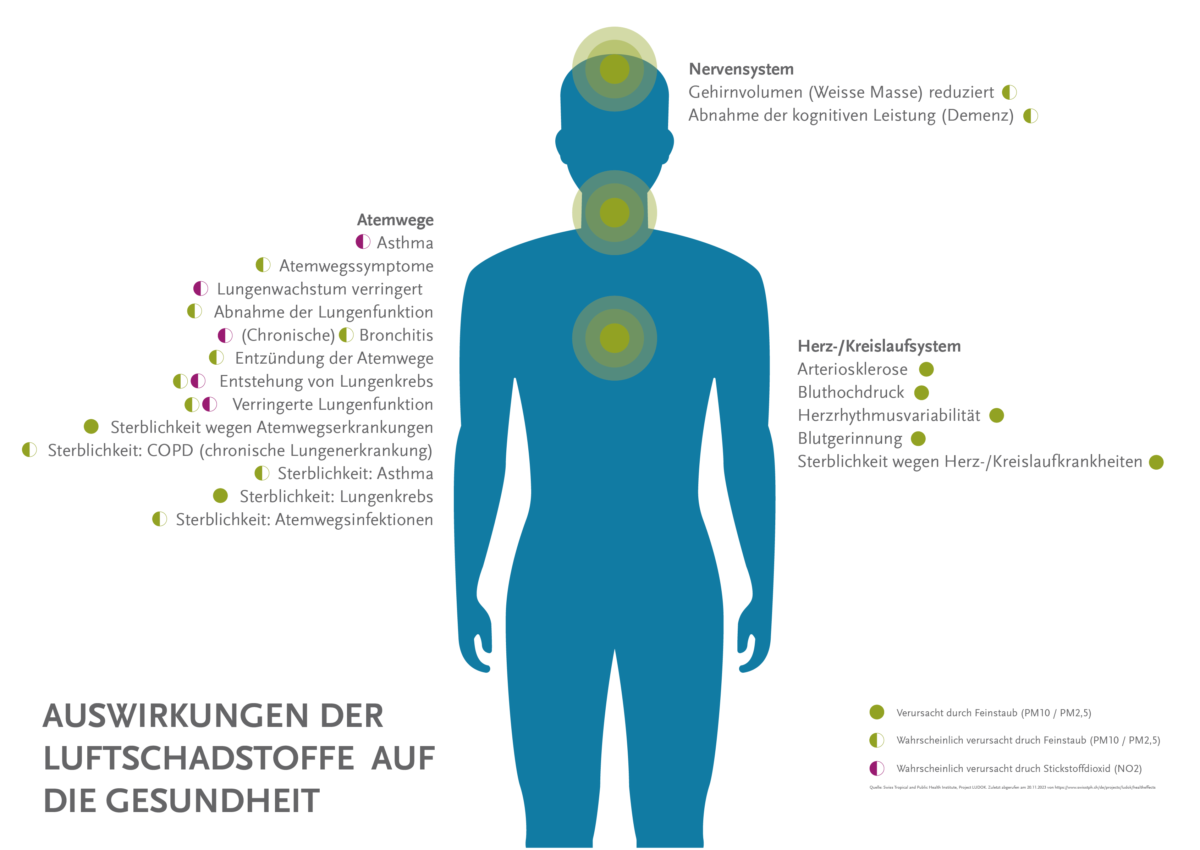
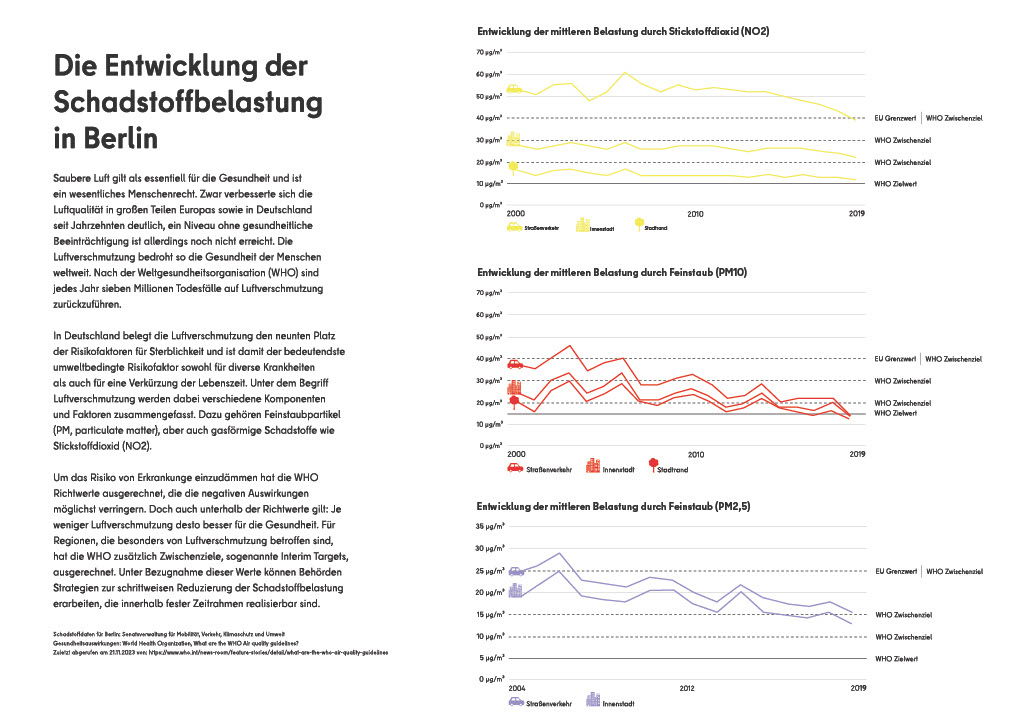
There was also a “citizens’ consultation hour” at this station, where a local government employee (also an actor) was available for dialogue. This opportunity for direct communication with the local administration is already a central part of (formal) participation. During such consultations, citizens can directly address the administration or politics with questions and concerns.
Station 4: District Assembly and Final Discussion
Finally, citizens participated in a simulation game that replicated a district assembly. In this setting, they met “representatives” (played by actors) and could formulate their own fictional motions, supported by the information from the previous stations. The representatives then decided on the introduction of the proposed traffic measures according to a predetermined scheme and explained their decisions more or less extensively depending on the scenario. The living lab concluded with a lively final discussion, where participants reflected on their experiences and insights gained from the entire process.
Insights: How can participation succeed in data-driven governance?
Our living lab on citizen participation provided fascinating insights into the successful design of participation in data-driven governance. These are the key findings:
Structured processes for informed decision-making
For effective citizen participation, it is crucial that both citizens and political decision-makers can follow a clearly structured participation process. This means that the entire implementation process of a measure must be made transparent, all participants must be informed about the current status and their opportunities to influence the process, and the arguments and data for decision-making must be disclosed. Only in this way can a comprehensive and well-founded evaluation of the advantages and disadvantages of measures take place.
Making local contexts clear
For successful citizen participation, the local context is crucial. Therefore, projects should always depict the specific impacts on the local area. In this way, the benefits and risks can be related to the specific realities of the affected individuals. In addition to the photographs used, the targeted use of digital media could also make the concrete impacts on the local area more tangible. Participants in the living lab particularly emphasised the potential of augmented reality in this regard.
Problem-solving through co-creation
Citizens are very interested in being involved in data-driven projects through co-creation. Unlike purely informative or deliberative participation, this approach involves working together with the municipality to develop concrete solutions in an open-ended design process. In data-driven projects, co-creation particularly involves contributing one’s own data or data analyses, such as from citizen science projects. However, the inclusion of such data currently faces high demands in administrative processes, as the data quality and integrity required for legally secure procedures cannot easily be guaranteed by citizens.
Participation in decision-making bodies
A key step in participation processes is motivating citizens to actively participate in decision-making bodies. Although citizens do not have voting rights at the local level, such as in district assemblies, they can ask questions and submit motions. The acceptance of measures can increase significantly if the contributions made are taken seriously and integrated into the decision-making process. If this integration is lacking, citizens often feel inadequately involved and perceive their contributions as undervalued.
These findings demonstrate the importance of involving citizens at all levels and creating transparent, understandable processes to ensure successful and accepted data and governance participation.
What do we take forward for the future?
The involvement of all stakeholders affected by data collection and/or processing is a central aspect of successful data governance. The interactive living lab examined how participation in data-driven measures should be designed to identify and ideally resolve conflicts of interest early on. Such measures are crucial to ensuring that data-driven municipal changes are accepted by the affected urban residents and implemented sustainably.
The living lab has shown that comprehensive information for citizens about administrative processes is necessary to enable a balanced assessment of benefits and risks. The local context and clear presentation of potential impacts are particularly important to encourage successful participation. Citizens want to actively participate in finding solutions, and direct interaction with political decision-makers helps harmonise the interests of all parties involved. These insights should be considered in future data-driven projects by administrations.
This post represents the view of the author and does not necessarily represent the view of the institute itself. For more information about the topics of these articles and associated research projects, please contact info@hiig.de.

You will receive our latest blog articles once a month in a newsletter.
Data governance
Polished yet impersonal: The unintended consequences of writing your emails with AI
AI-written emails can save workers time and improve clarity – but are we losing connection, nuance, and communication skills in the process?
AI at the microphone: The voice of the future?
From synthesising voices and generating entire episodes, AI is transforming digital audio. Explore the opportunities and challenges of AI at the microphone.
Do Community Notes have a party preference?
This article explores whether Community Notes effectively combat disinformation or mirror political biases, analysing distribution and rating patterns.





